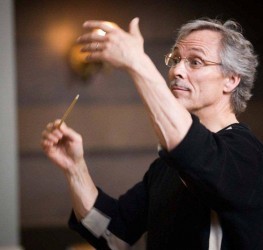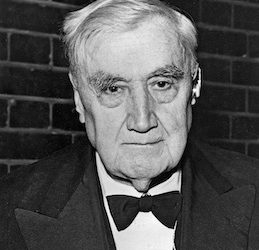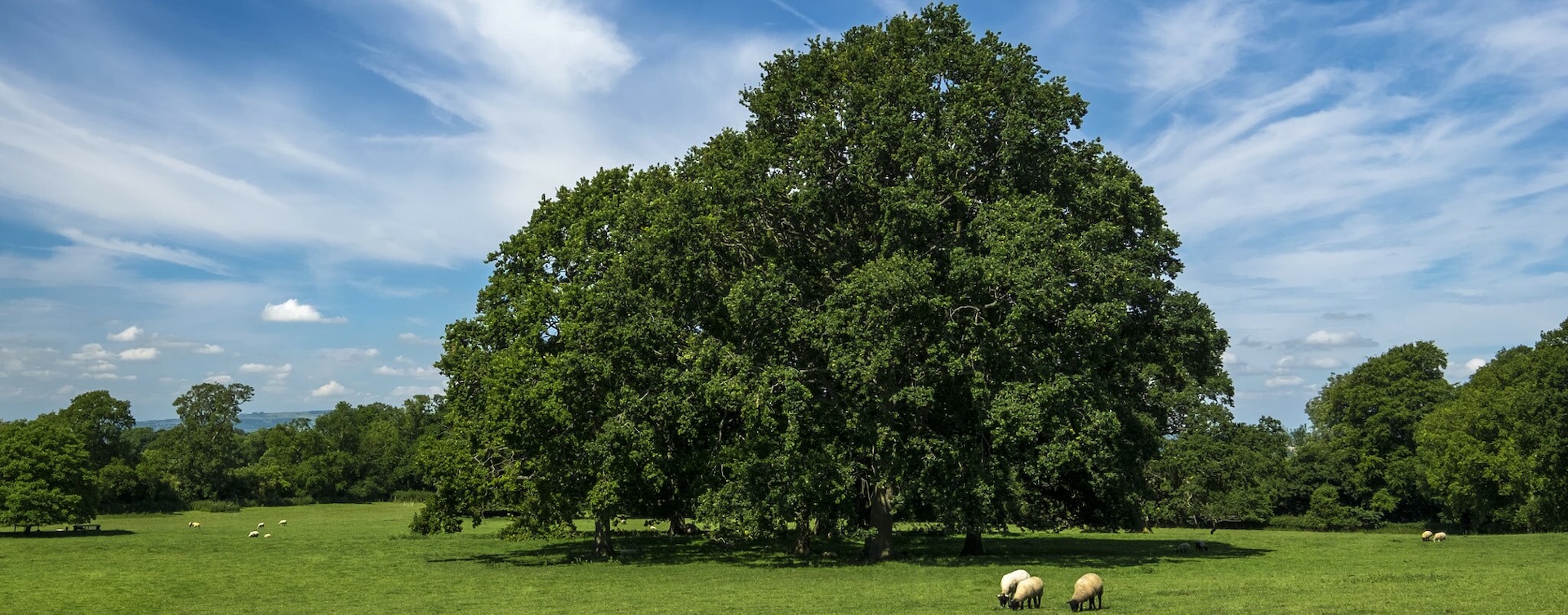Ett fåtal biljetter finns att köpa vid entrén.
28 januari 2024 kl 15.00
Eric Ericsson-hallen, www.ericericsonhallen.se
Kyrkslingan 2-4, 111 49 Stockholm – SLs reseplanerare
bild: English countryside, Hidcote. Ilya Grigorik via Wikimedia Commons.
A Pastoral Symphony
Låt Orkestern Filialen ta dig till landsbygdens solbelysta gröna betesmarker och reflektera över allt det underbara som finns på vår jord, men också över de härjningar vi utsätter den för. De fyra verk som orkestern framför är en själslig njutning för både den vane konsertbesökaren och den som är mindre van vid att lyssna till klassisk musik.
🇨🇦 In the bleak midwinter, let Orkestern Filialen take you to the green pastures of the sunlit countryside, and sink into a place where you can reflect both on the pleasures of the earth and the ravages we inflict upon it. Four works of exceptional beauty offer a treat both to the seasoned concert-goer and to friends of the orchestra less used to listening to live classical music.
🇸🇪 Solist är sopranen Matilda Sterby . Hennes debut var i rollen som Grevinnan i Figaros bröllop på Läckö Slott 2019. Hennes genombrott kom dock i rollen som Marenka i Smetanas Brudköpet på Göteborgsoperan. Matilda Sterby är engagerad i flera operahus i Europa som t.ex. Magda i Puccinis La Rondine på Volksoper i Wien och Puccinis La Boheme på Badisches Staatstheater i Karlsruhe. År 2022 tilldelades Matilda Sterby första pris i tävlingen Hjördis Schymberg Award för unga nordiska operasångare. Hennes röst har bland annat beskrivits som ”klar som kristall”.
🇨🇦 Our soloist is the soprano Matilda Sterby. Her critically acclaimed debut was as La Contessa in Le Nozze di Figaro at Läckö Slott in 2019, although her definitive breakthrough was in the role of Marenka in the Gothenburg Opera’s version of Smetena’s The Bartered Bride. She is currently working on the continent, where her roles include Magda in Puccini’s La Rondine for Volksoper Wien, and Mimi in Puccini’s La Boheme for Badisches Staatstheater Karlsruhe and La Contessa in Le Nozze di Figaro for Hannover Staatsoper. ‘For her beautiful lyric soprano voice, her clear musicality and her exciting stage presence, Matilda Sterby wins First Prize’, wrote the jury that selected her for the Hjördis Schymberg Award last winter. ‘Matilda Sterby gives the evening it’s innermost, most deeply human glow’ wrote a critic in Vienna’s Standard in 2021, while NLT called hers ‘a voice as of the noblest crystal, clear but transparent to the emotions. What power and modulation ability she displays. There were moments when time held its breath as if in deference to her singing’ (Bo Borg, NLT 2022-07-13).
🇸🇪 Kanadensiskfödde Glenn Mossop är en av orkestern favoritdirigenter och Pastoralsymfonin är ett av hans favoritverk. (Här under kan du läsa mer om detta verk och resten av programmet). Förutom att ha dirigerat de flesta av Sveriges professionella orkestrar har han även undervisat en hel generation unga dirigentelever på Musikhögskolan i Stockholm.
🇨🇦 Canadian-born Glenn Mossop is one of our favourite conductors, and the Pastoral Symphony is one of his favourite works (scroll down to read about it and the other works on the programme). As well as having conducted most of Sweden’s professional orchestras, he has trained generations of young conductors at the Royal College of Music in Stockholm.

Glenn Mossop, dirigent

Matilda Sterby, sopran

Ralph Vaughan Williams, tonsättare.
Om musiken
W.A. Mozart (1756-1791): Uvertyr till Trollflöjten/Overture to the Magic Flute (7′)
🇸🇪 Trollflöjten hade premiär 1791 och är en av Mozarts mest älskade operor. Uvertyren innehåller operans alla höjdpunkter. Den unge Tamino söker kärlek och visdom. Han finner till slut kärleken i Pamina. Han finner visheten hos den rationelle och gode översteprästen Sarastro. Men innan dess prövas han hårt. Sarastro håller nämligen den oskyldiga Pamina fången. Paminas mor är Nattens Drottning, representanten för det onda och mörka. Tamino och hans följeslagare fågelfångaren Papageno, skyddas på prövningarnas väg av två musikinstrument, en gyllene magisk flöjt och ett knippe förtrollade silverbjällror. De vackraste ögonblicken i operan utspelar sig i en trädgårdsmiljö, så förutom att få en rivstart på konserten, tar uvertyren med publiken in i ett grönt rum
🇨🇦 The Magic Flute, which premiered in 1791, is one of Mozart’s best-loved operas, and the overture contains all the highlights, introducing the themes that accompany the crazy, convuluted plot and the colourful characters involved in it. Handsome prince Tamino is lost, pursued by a monstrous serpent, and appeals to the gods for help. He is saved instead by three magical women who end up playing the role of an ancient Tindr: Tamino falls hopelessly in love with the portrait they give him of Pamina, daughter of their boss, and the person with one of the most famous of opera arias, the Queen of the Night. Before Tamino and Pamina end up in each other’s arms at the end, there are complicated adventures involving the feathered bird-catcher Papageno, disseminator of fake news (his story ends well, with his mate Papagena) and the Queen’s ex, the arrogant misogenist Sarastro. Many of the most beautiful moments in the opera take place in a garden setting, so as well as getting the concert off to a rolicking start, the overture opens a green, bucolic space which the orchestra invites the audience to share for an hour or so.
Frederick Delius (1862-1934): The Walk to the Paradise Garden (10′)
🇸🇪 Det andra verket i programmet håller oss kvar i trädgården. Verket komponerades 1900-1901 av den engelske kompositören Frederick Delius. Det är ett drömlikt mellanspel från operan A Village Romeo and Juliet, som hade premiär i Berlin för nästan exakt 117 år sedan. Delius försökte, genom naturen, uttrycka en djup andlighet och ett accepterande av de olika vändningar som livet kan ta. Berättelsen handlar om två unga bönder, vars kärlek svärtas ned av en fejd mellan deras familjer. I sitt lidande finner de ett ögonblick av lycka och det är när de går iväg själva till Paradisets trädgård. Stycket börjar med ett milt tema som introduceras av horn och fagott, sedan vidare till engelska horn och över till de andra blåsinstrumenten. Stycket når sin höjdpunkt i operans kärlekstema innan det försvinner i tystnad när paret lämnar trädgården och återgår till sina olyckliga liv.
🇨🇦 The second piece on the programme keeps us on the garden path. Composed in 1900-01 by the English composer Frederick Delius, it is a dreamlike and sensuous interlude from the opera A Village Romeo and Juliet, which premiered in Berlin almost exactly 117 years ago. A late-bloomer, Delius sought to express a deep spirituality, and an acceptance of the different turns that life can take, through the experience of nature. The story is about two young peasants, whose love is frustrated by a feud between their families. In their suffering, they find one moment of happiness – when walking, away from everyone else, in the Paradise Garden. The piece begins with a gentle theme which is introduced by the second horn and bassoon, taken up by the English horn, and then wanders among the other winds. It reaches a climax with a full orchestra crescendo and the love theme of the opera before fading into silence, as the couple leave the garden and return to their unhappy lives.
Richard Strauss (1864-1949): Vier Letzte Lieder (24′)
🇸🇪 De fyra sista sångerna för sopran och orkester är korrekt namngivna. Richard Strauss färdigställde musiken 1948 när han var 84 år gammal. Det framfördes i London i maj 1950 ett år efter hans död. ”Frühling” (Vår), ”September” och ”Beim Schlafengehen” (När man somnar) är tonsatta ord av Herman Hesse. Den fjärde sången ”Im Abendrot” (I solnedgången) är skriven av Joseph von Eichendorff. Sångerna anses allmänt vara ett medvetet farväl av en kompositör som är redo att lämna världen i ro, trots att världen hade härjats av krig under hans sista år.
🇨🇦 The Four Last Songs for soprano and orchestra are appropriately named. Richard Strauss completed the work in 1948, when he was 84, and it premiered in London in May 1950, a year after his death. ‘Frühling’ (Spring), ‘September’ and ‘Beim Schlafengehen’ (When Falling Asleep) are set to words by Herman Hesse; the fourth, ‘Im Abendrot’ (At Sunset) by Joseph von Eichendorff. They are widely thought to be a conscious farewell by a composer ready to leave the world, and to do so in peace, despite that world having been ravaged by war in his late years.
Ralph Vaughan Williams (1872-1958): Symphony #3, ’The Pastoral’ (34′)
🇸🇪 Krig är bakgrunden till det sista verket på programmet, som också får ge konserten dess namn: ”Pastoral Symphony” av den engelske kompositören Ralph Vaughan Williams. Det har blivit känd som en elegi för dem som dog i första världskriget, och en hymn för freden. Under kriget hörde Vaughan Williams en trumpetare i militären öva, och detta avspeglas i andra satsen. Även om det är lätt att föreställa sig den gröna engelska landsbygden när man lyssnar på detta verk, menade kompositören att landskapet han själv hade i åtanke var fälten i Frankrike, där han tjänstgjorde i det militära. Verket består av fyra satser. I den sista satsen ”Lento” kommer sopranen tillbaka och sjunger ordlöst. Hela symfonin avslutas med att sopranen sjunger musiken till tystnad.
🇨🇦 War is also the backdrop to the final work on the programme, which gives the concert its theme: the ‘Pastoral Symphony’ by the English composer Ralph Vaughan Williams. It has become known as an elegy for those who died in World War I, and a hymn for peace. During the war, Vaughan Williams heard a bugler practising, and the sound made its way into the trumpet cadenza in the second movement. While it is easy to think of the green English countryside when listening to this work, which was first performed almost exactly101 years ago, the composer said that the landscape he had in mind was the fields of France, where he served in the Royal Army Medical Corps. There are four movements: Molto moderato; Lento moderato/Moderato maestoso; Moderato pesante (a ‘slow dance’, as the composer described it); and Lento, when the soprano returns, to sing without words over a drumroll. The symphony ends with her singing the music into silence.








KONSERTER
Kommande konserter
1 novemberKommande konserter
2 novemberKommande konserter
6 december